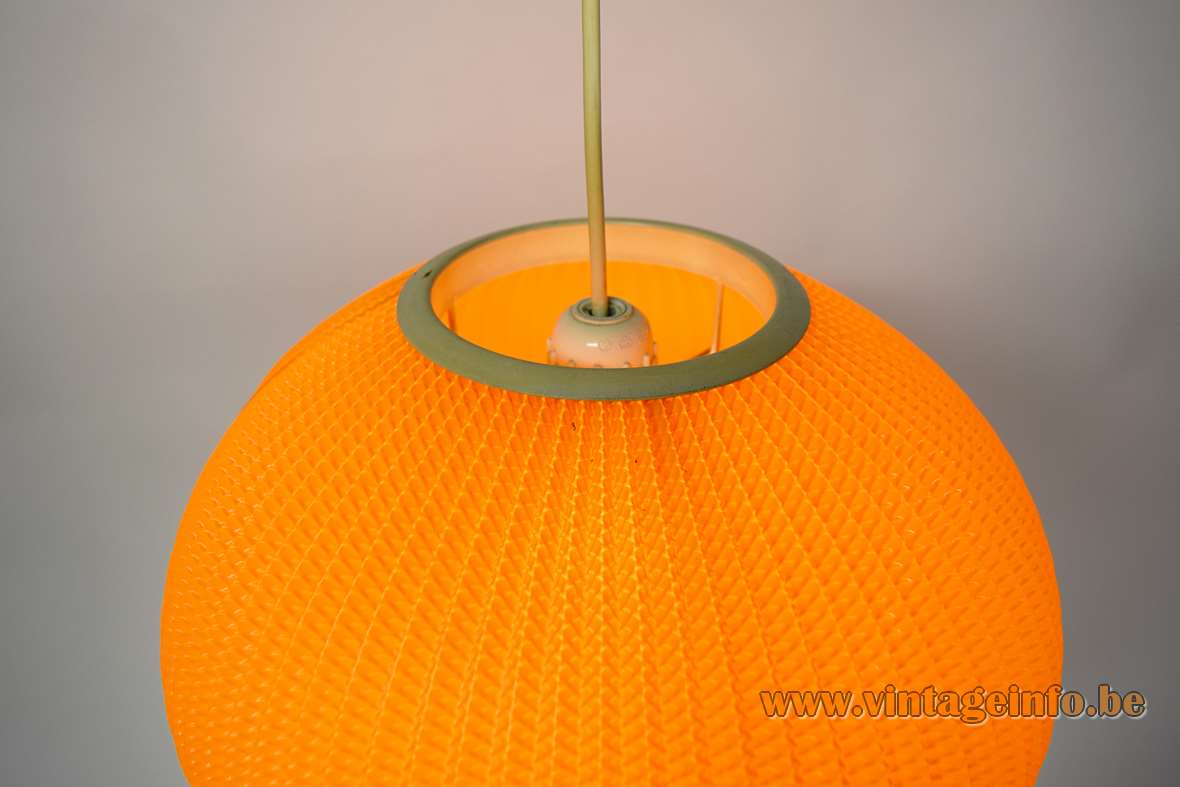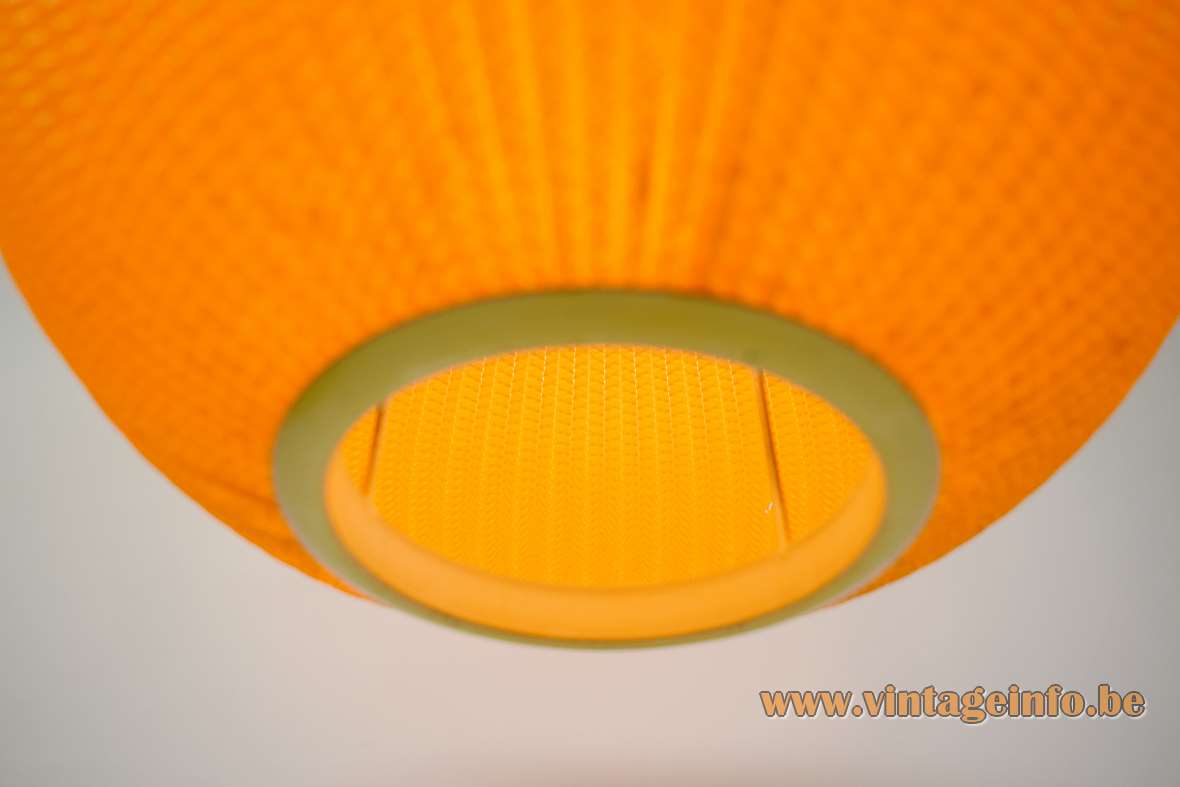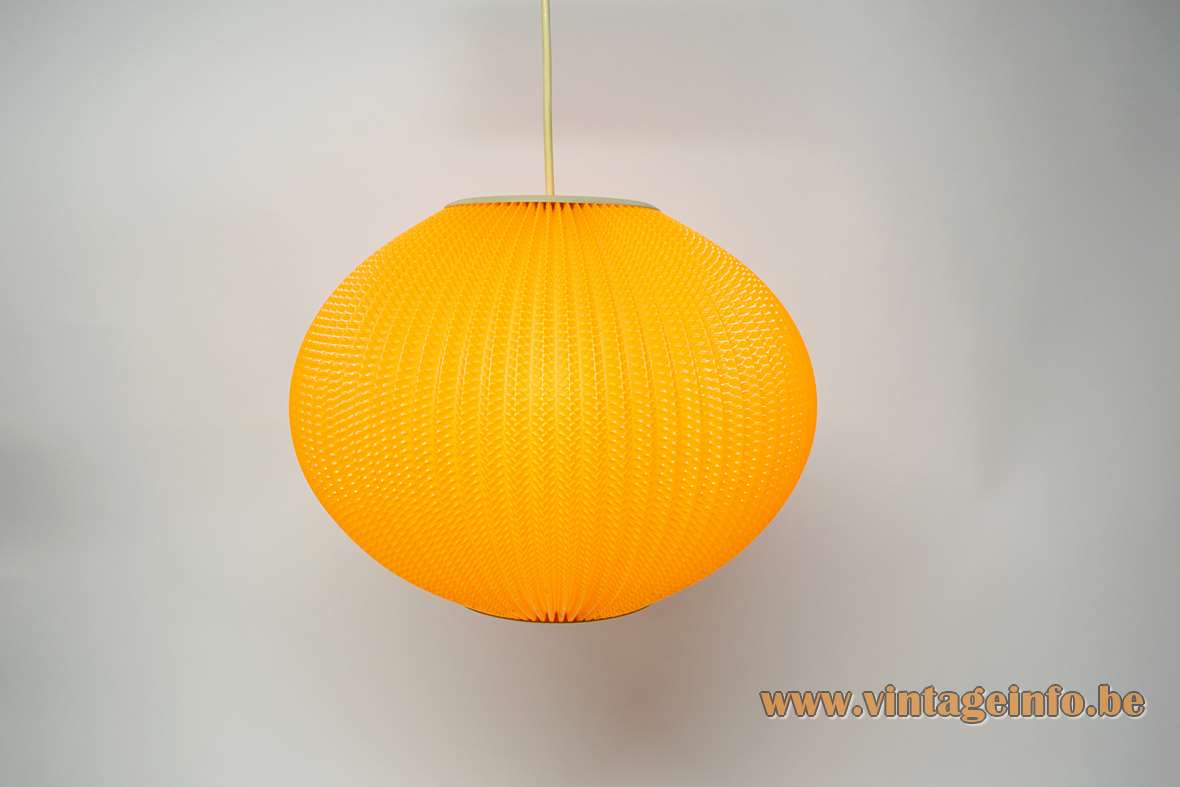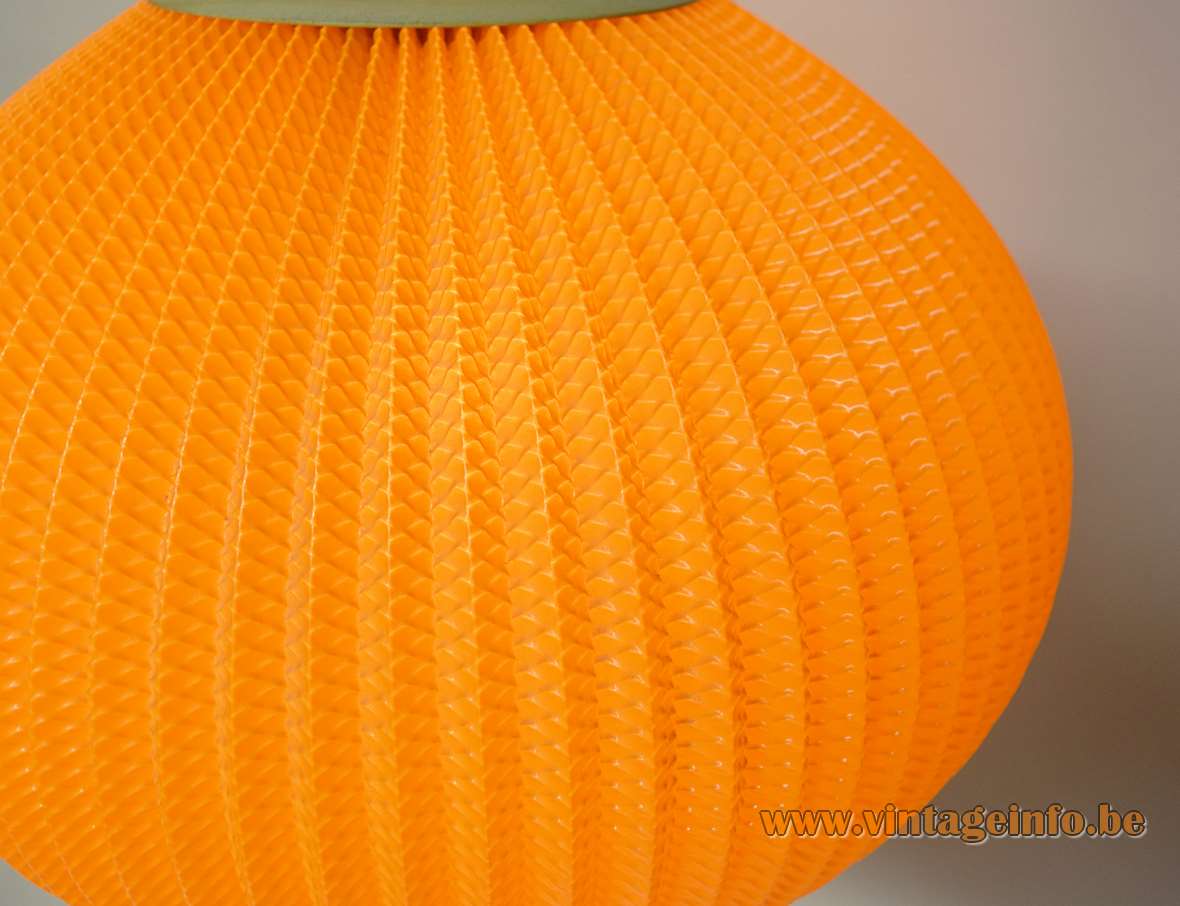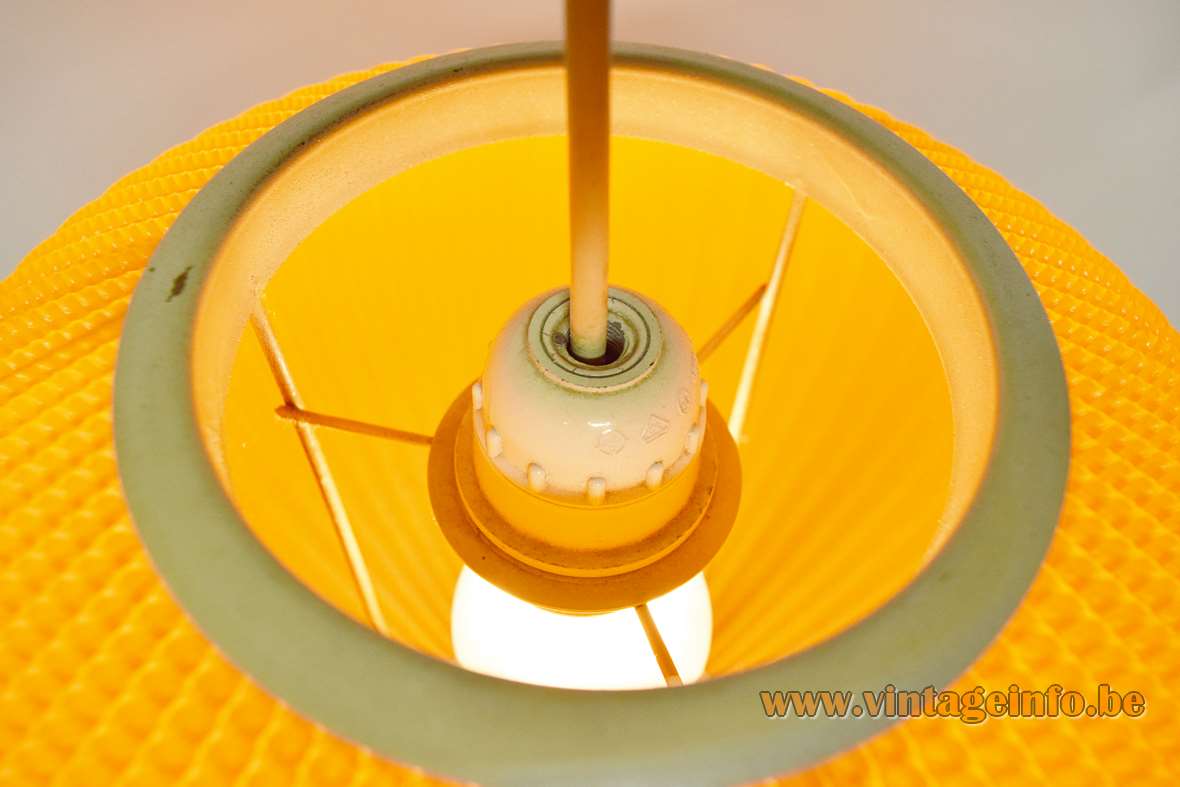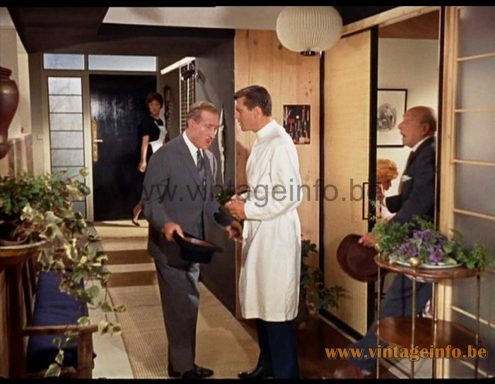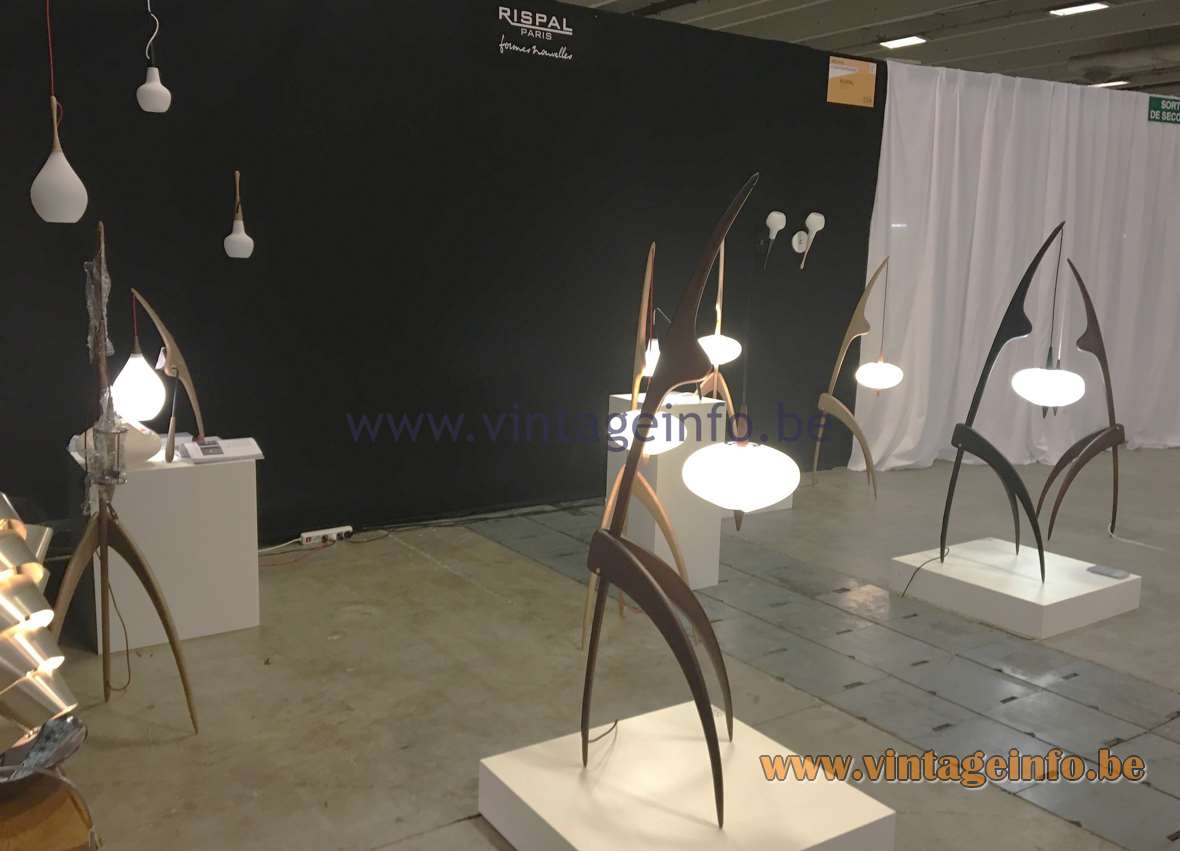Lamps in the movies
A Pearlshade pendant lamp, maker unknown, appears in the 1959 French-Italian drama film Voulez-vous danser avec moi? English title: Come Dance with Me. Starring Brigitte Bardot, Henri Vidal and Dawn Addams. The lamp has some similarities with a pendant lamp from the Hoyrup series Bojan.
Praying mantis floor lamps on the Les Puces du Design fair in Paris, France in April 2018.
Many thanks to Uffe Schiøler for the enlightening information.
Orange Pearlshade Pendant Lamp
Materials: 2 white painted round metal rings, metal wire frame. Some early (orange) folded plastic, probably cellulose acetate (Rhodoid) for the globe lampshade. White painted Bakelite E27 socket.
Cord Length: 60 cm / 23.62”
Height: 25 cm / 9.84”
Width: ∅ 33 cm / 12.99”
Electricity: 1 bulb E27, 1 x 60 watt maximum, 110/220 volt.
Any type of light bulb can be used, but a white/opaque or frosted one is preferred.
Period: 1950s, 1960s – Mid-Century Modern.
Designer: Made after a design by Lars Eiler Schiøler (1913-1982).
Manufacturer: Massive, Mortsel, Belgium – attributed.
Other versions: This orange Pearlshade pendant lamp exists at least in white with black rims. Probably also made in other colours.
Although it looks very similar to the Pearlshade lamps of the Danish Hoyrup company, it is not. Not only they never produced a complete round one, the two rings are completely different. The top part was always slightly larger and rounder than the bottom part. In the beginning these lamps were also produced with a wire-frame. Later a clear plastic tube was used. It was glued together with the top and bottom ring. This fragile plastic was produced by the German company Dynamit Nobel from Troisdorf.
Do you have an idea about the maker of this pendant lamp? Please let us know through the contact form and help improve the websites exactitude. Your help is much appreciated.
It was in all probability sold by Massive, Belgium.
Hoyrup
The Hoyrup company was founded in Christianshavn, Copenhagen, Denmark by Preben Johan Høyrup in the late 1940s. In 1968 Lars Eiler Schiøler became minority shareholder. Lars Schiøler designed almost the complete collection from the 1950s until the 1970s for the company.
Hoyrup created a wide range of stylish modern Danish lights, that were easily-assembled and therefore easy to ship around the world to more than 40 countries. In 1978 the company was split and sold, it became HoyrupLight. It ended business in the mid 1980s. The famous lamps are copied by many companies.
Other designers that worked for Hoyrup: Carsten Erik Schiøler, Uffe Gustav Schiøler.
Rispal
These pendant lamps are almost always attributed to the Rispal company from Paris, France. Rispal produced similar lamps. They are mostly used to restore the famous “mante-religieuse” praying mantis floor lamp designed and made by Georges Rispal in 1950 and in production since 1952. These shades are very often damaged or lost. These lamps were produced with several different lampshades.
Georges Léon Rispal (1901 – ?) was a French lamp designer. He is famous for his original creations and biomorphic forms. He founded his company Rispal in 1924. It was located in 172, Rue de Charonne, Paris, France.
Both designer and producer, Georges Léon Rispal is a designer out of category. His creations have entered the history of international design, including its “mante-religieuse” praying mantis floor lamp today considered one of the finest creations of French luminaries from the 1950s.
The original name of the praying mantis lamp is a number: 14. The name was made up by a dealer because of the resemblance with the locust.
Many other companies produced this folded design from around 1955. It was 3 years after the first praying mantis lamp was sold. First editions of lamp number 14 have a “classic” lampshade.
Douglas Mont
In 2014 the business was reactivated and some of the famous designs are are back in production. The company is located in 69, Passage de Choiseul, 75002 Paris. The president is Douglas Mont. He is a designer and sculptor and designed biomorphic light and lighting furniture, as you can see on his website.
The “manchette” or “cuff” plastic is stretchable thanks to the folds, and therefore fits perfectly on the frame. Almost the same kind of plastic has been used for years to decorate flower pots and it is still available today.
Cellulose acetate
Cellulose acetate is an early plastic, sold under the trade names Rhodoid in France and Great Britain, Tenite in the USA and Cellon in Germany. It was first prepared in 1865. Cellulose acetate is used as a film base in photography, for eyeglasses, cigarette filters and playing cards.
Links (external links open in a new window)
History of the Hoyrup company in their website
Similar pendant lamp in the 1960s catalogue on the Hoyrup website
Similar pendant lamp in the 1970s catalogue on the Hoyrup website
Lamps in this style on Vintageinfo
Pearlshade pendant lamp (white version of this one)
Another Hoyrup Pearlshade style pendant lamp
Oval globe Pearlshade style pendant lamp
Italian 1950s ‘Rhodoïd’ Floor Lamp

